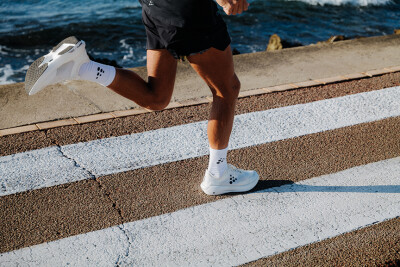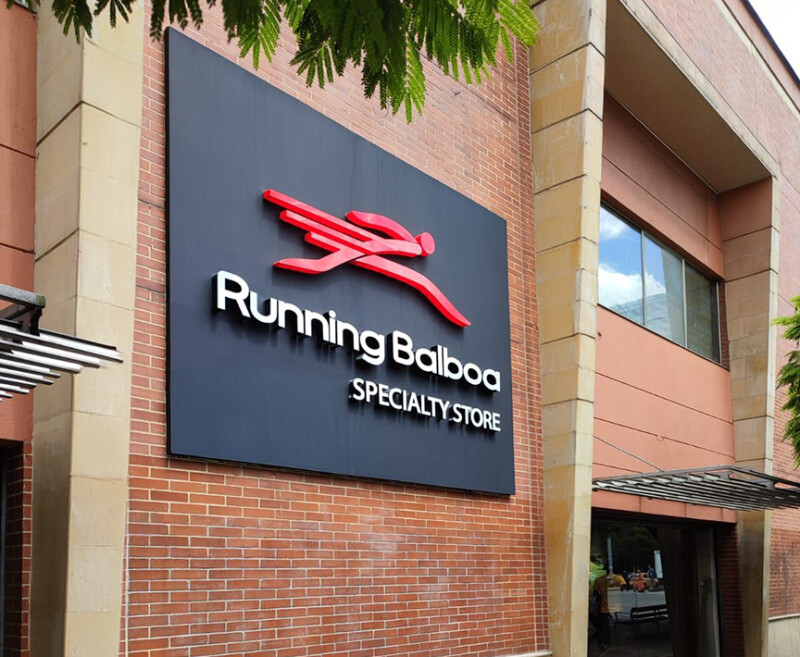As a footwear innovation, the midsole might be said to have evolved from the foamed rubber insole of the Converse athletic shoe, familiar by its near ubiquity. Adolph Dassler, he of the eponymous Adidas brand, expanded on the unification of midsole and outersole, but for aesthetic purposes enshrouded it in a foxing of rubber, as seen in their current lifestyle Gazelle model.
Meanwhile, Kiachiro Ontisuka’s Tiger running shoes, today known as ASICS, were among the first to show a distinct midsole. This was also adopted by Nike after Blue Ribbon Sports detached itself from the Onitsuka Tiger brand. The combined innovations of nylon uppers with multi-layered midsoles by Tiger, Adidas and Nike, which arrived at the intersection of the first running boom of the 1970s, prompted other brands to do likewise.
Research from the 1930s allowed the discovery of materials that are still often thought of as modern marvels — plastics that are used in textiles as well as a myriad of configurations which almost defy comprehension. One amusing aspect is that plant-based by-products are also chemically derived, organically, though we think of organic products in a different category than those that are manufactured in a factory, which we ironically call a “plant.”
The running midsole innovation that has raised much of the attention in our current technological climate is the nitrogen-infused midsole foam materials from a variety of brands, whereby a block of plastic is put under heat and pressure while a super critical fluid is forced into it.
What? You’ll remember your Junior High science class where your science teacher explained that there were three states of matter — solid, liquid and gas. Well, it turns out that there are other intermediate states depending on a variety of conditions!
Over the past several decades, some of the materials and processes used were not very environmentally friendly because the key ingredients needed to get the desired reactions were notably harmful, whether long-term environmentally or immediately, personally.
That situation is now changing because of clever engineering and discoveries of cleaner and greener solutions. To shine a light on the best practices for better running shoe creation, we turn to two industry sources – the Craft Design and Engineering Team and Todd Falker, Puma Running – for their solutions and new products that have been developed for this favorite sport of ours, running.
How does the Nitrogen cause the creation of the midsole foam?
Pure nitrogen and/or carbon dioxide is flushed as the singular foaming agent. The elements are fully integrated under high temperature and high pressure and many micron-sized bubbles are formed through rapid venting to form a uniform distribution. The bubbles create pores with a distribution that is uniform and dense throughout the finished product. — Craft Design and Engineering Team.
Nitrogen is the good stuff when it comes to Nitro and super critical foaming. We call it super critical, because the nitrogen is not a gas or liquid or solid. The nitrogen is put under high pressure and high heat, so it enters a super critical state of matter. This allows the Nitro to infuse through our Core starting embryo, in a consistent and high-quality way. The end result is we have a light, cushioned and responsive foam that is one of the best in the industry. For that reason, RunPuma uses Nitro and Nitro Elite foams in all of our premium and every day running shoes. — Todd Falker, Puma Running
Does the plastic block’s composition (i.e. EVA, PEBA, etc.) make a difference in the process?
First we use both higher quality raw materials, mostly TPEE and PEBA, occasionally others, but not really 100 percent EVA. Second is the process of physical foaming, nitrogen in a super critical state, that allows for a better foaming process. The final result, which we’ve trademarked Nitro, is more consistent in structure, for a better ride thanks to a lightweight foam that maintains the excellent rebound and delivers a more effortless run to consumers. — Todd Falker
The starting compound does make a difference. Whether it is EVA or PEBA to start does give a different result. Also, how those compounds are tuned gives variance in the performance. Our Cr Foam starts with specially tuned EVA and is flushed with nitrogen. The result is a very high rebound unit that has what we believe is best-in-class deceleration.— absorbing a great deal of energy on impact and not sacrificing toe off acceleration. — Craft Design and Engineering Team
Anything particularly special about the uppers of your shoes?
The key statement technology is PwrTape, utilized mostly in race-day shoes, but also in many trainers going forward. PwrTape is targeted support in key areas. Also, we have had a partnership with First Mile for the past five years and they have a great story you can find on their website. — Todd Falker
Are there unique properties for your brand’s outsoles?
The Pure Trail outsole has a lug configuration that mixes ground penetration qualities and optimum surface area. The surface areas allow the siped rubber to grip to wet surfaces and piercing lugs dig through soft ground and mud. There is also a rock plate that protects the foot from rocks and debris, and it also disperse wight across the lugs to optimize performance of the various lugs.
The CTM Ultra 3’s bottom unit is about versatility. It handles like a road shoe on the pavement and like a trail shoe in the dirt. The cut-out areas keep the unit lightweight and the low-profile lugs both dig into light soil and grip tarmac. This shoe is part of our hybrid category that we call “the gravel bikes” of running shoes. — Craft Design and Engineering Team







